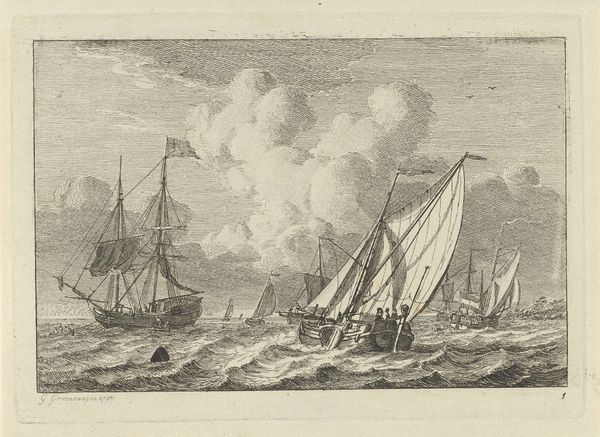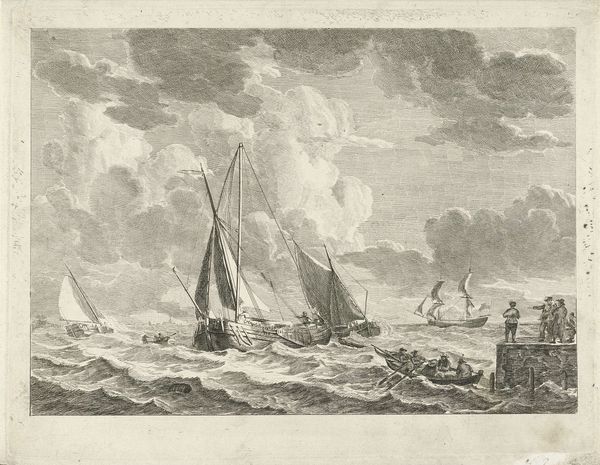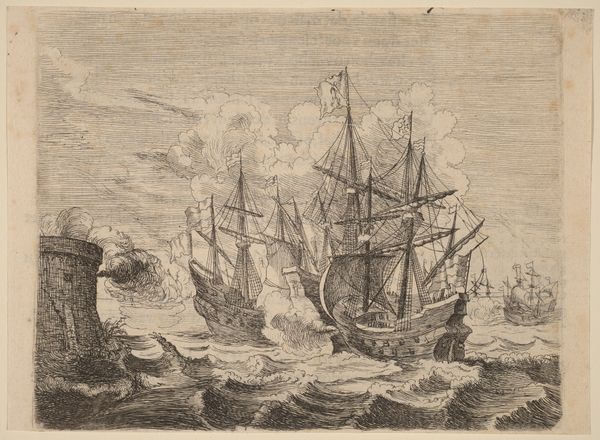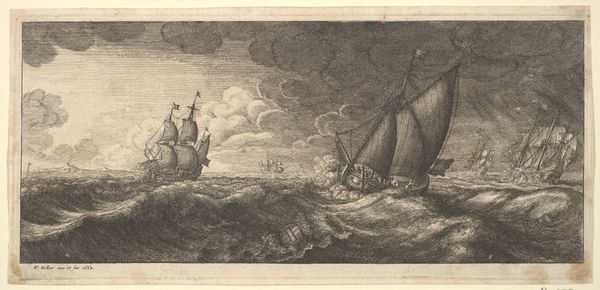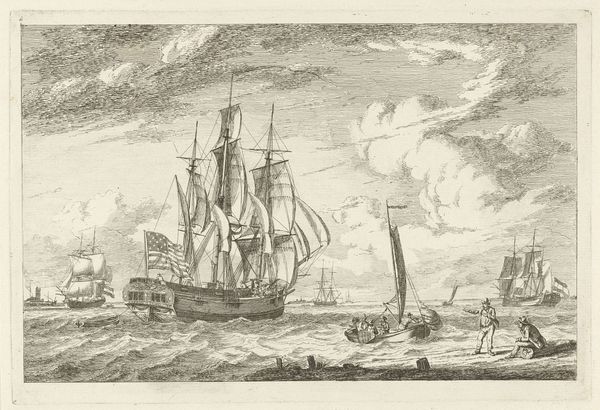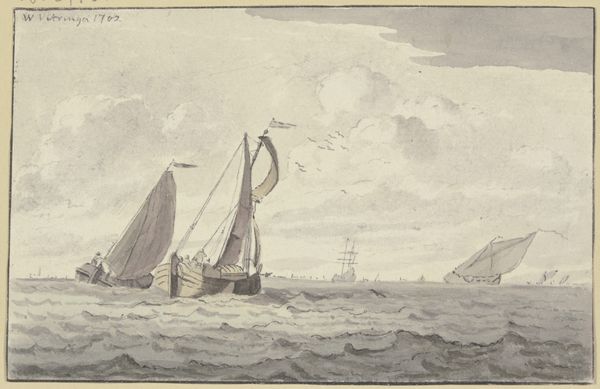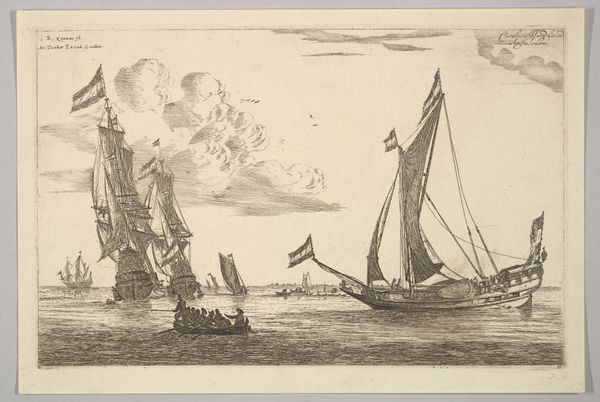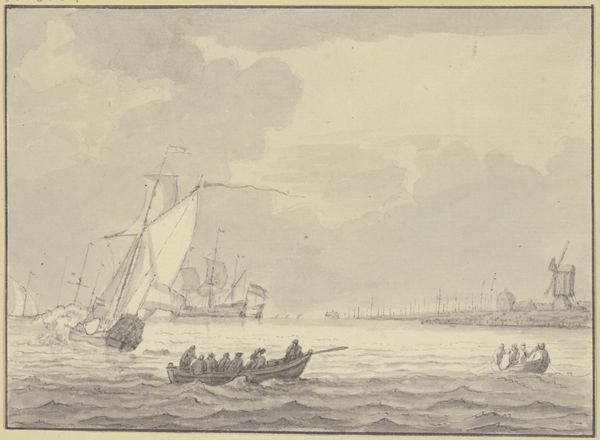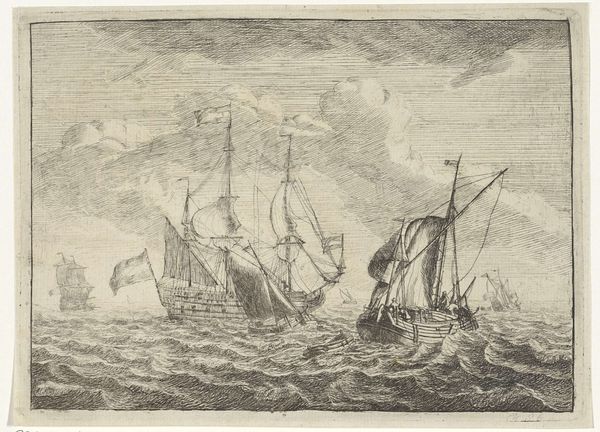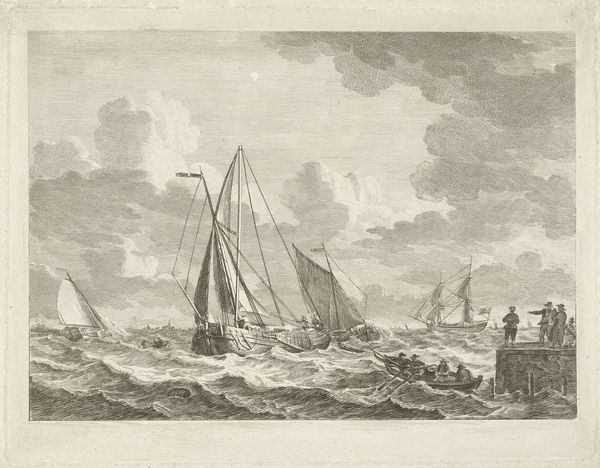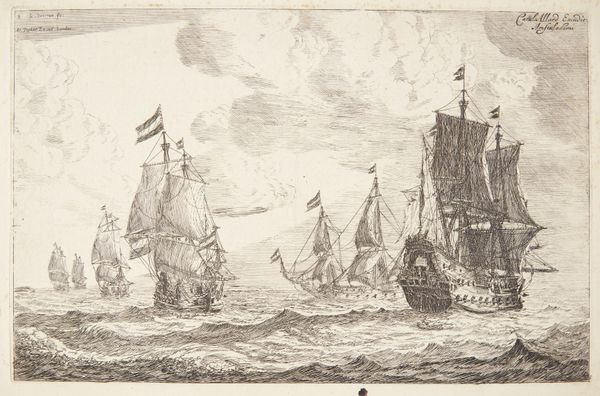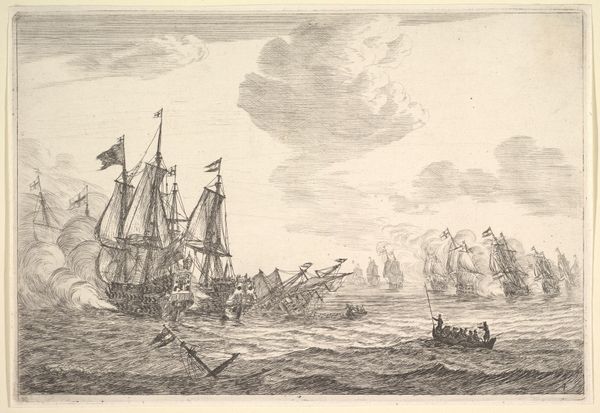
print, etching
#
dutch-golden-age
# print
#
etching
#
landscape
#
genre-painting
Dimensions: plate: 13.2 × 20.5 cm (5 3/16 × 8 1/16 in.) sheet: 14.6 × 22 cm (5 3/4 × 8 11/16 in.)
Copyright: National Gallery of Art: CC0 1.0
Curator: My first impression is "dramatic." Those choppy waves, the billowing sails...it feels like a tiny moment plucked from an epic sea adventure! Editor: Exactly. We're looking at "Three Sailing Vessels at Choppy Sea," an etching by Reinier Nooms, dating from around 1656. It’s a powerful little print, isn't it? Curator: Nooms, huh? Sounds about right. His skies remind me of Jacob van Ruisdael. I love how the etching lines create movement. The diagonal tilt of the ships is brilliant. Editor: Notice the deliberate use of line and texture, the meticulously etched details—especially the contrasting densities in the clouds versus the waves. These techniques give the work not only its aesthetic qualities but also spatial depth. The almost monochrome effect accentuates form. Curator: Absolutely. And it adds a timelessness to it, don't you think? Those Dutch masters really understood how to harness light and shadow. The detail, from the billowing clouds to the flags is quite exquisite. Imagine what stories these ships carry. Are they just fishing boats, or off to the New World perhaps? Editor: That contrast between the specific details and the broader sense of atmospheric turmoil, really speaks to Nooms' ability to render narrative tension through purely visual means. There is also an almost genre like feel of painting what surrounds it within these sailing vessels. It is an approach to create a narrative that pulls viewers in using the familiar scenes to ground larger story arcs within a particular cultural setting. Curator: It's captivating! Almost a silent poem about man against the elements. Editor: Indeed. I suppose we have revealed a bit of this tension between form and evocative representation. Both aspects were critical to this artistic moment. Curator: Ultimately, this print reminds us of how deeply moving the simplest images can be, you know, when they capture something fundamentally human. Editor: Quite. Thank you for shining light on those emotional undertones and visual qualities!
Comments
No comments
Be the first to comment and join the conversation on the ultimate creative platform.
